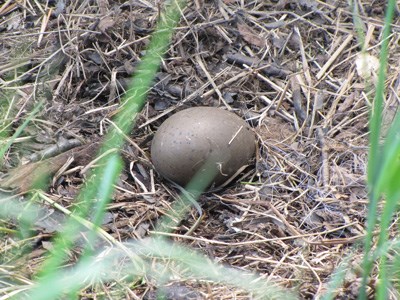
Introduction Few animals evoke the feeling of the North Woods like the common loon (Gavia immer). This iconic symbol of Voyageurs leaves a lasting impression on visitors who hear its eerie yodel echoing across the lake. It is fitting for the common loon to be the state bird of Minnesota, as it supports the largest loon population in the lower 48 states. Where can you view loons? Visitors wanting a view of this beautiful bird will not need to search far. Loons are numerous throughout the park and are usually found floating in the deep water of the four large lakes. In late summer, loon families with young chicks may be seen in quiet, protected bays. Population The waters of Voyageurs have been surveyed for loons since 1979. Voyageurs is considered a 'sink' for loons because most breeding loons are not able to successfully raise chicks. There are a variety of reasons for the lack of chick production, but the biggest reason is due to flooding of nests or predation by eagles, gulls, and other predators. The adult population nearly doubled between 1979 and the early 2000s, but has remained stable since then, with an average number of 192 adults and 26 chicks counted annually in the park in recent years. Status

NPS Characteristics This majestic bird gets its name from the Norwegian term meaning "awkward". As a loon's body is adapted for diving and catching fish, the feet are placed farther back on the body causing an awkward imbalance when walking. The plumage of the common loon provides the bird with excellent camouflage. A black body decorated in a distinct white-checkered pattern allows this bird to easily blend in on a sparkling lake. Its unique red eyes make it difficult to confuse with any other bird and enhances its ability to see underwater. Larger than a duck, the loon is approximately 30 inches in length and weighs 8-12 lbs. Unlike other birds, loons have solid bones, giving them the extra weight needed for diving great depths during fishing. A wingspan of 60 inches helps provide this heavy bird with lift during take-off. Breeding The abundance of protected, weedy bays provides ideal nesting and brood-rearing habitat for loon families. Pairs are likely monogamous and tend to occupy the same territory each year, sometimes reusing the same nest. Females lay an average of 2 eggs and incubate for about 1 month. Most chicks hatch during the month of July and remain close to the parents for the next 2-3 months, and may be seen hitching a ride on their parent's back. Due to their awkward leg placement, It is cumbersome for loons to walk very far so they tend to nest in vegetation within three feet of the shoreline. This proves advantageous as a quick escape from predators, as even adults are vulnerable on land. However, the proximity of their nests to water also makes incubating eggs susceptible to damage by wave action and changes in water levels. Loons and Water Levels Prior to 1913, no dams existed within present day Voyageurs National Park, allowing water levels to follow a natural fluctuation. In 1913, the construction of three dams altered that pattern, and from 1913 to 2000, dam operators adjusted lake levels to accommodate a variety of uses, including hydroelectric power and safe navigation of boats. These unnatural fluctuations often had negative effects on water birds, especially loons. In 2000, the International Joint Commission (IJC) revised how water levels were managed in part to better mimic natural conditions present before the dams were installed. Reinstating a natural lake level fluctuation has improved loon nesting success. However, heavy rain during critical nesting periods, wind and wave action, and visitor disturbance can cause damage to nests. How can you help loons?
Current Research in the Park An annual loon survey is completed each summer. In mid-August, the entire U.S. shoreline of Rainy, Namakan, Kabetogama, and Sand Point Lakes is surveyed for loons with a focus on chick survival. Listed below are the survey results from 2010-2015.
Loons and the Future The possibility of spring flooding and strong wave action will always be a threat to incubating eggs in nests. However, with regulations in place to keep lakes fluctuating at natural levels, loon nests will hopefully experience less flooding from human-related causes. Voyageurs' undeveloped shoreline will continue to provide suitable nesting habitat and a healthy fishery will provide the proper diet of fish for both loon adults and chicks. For more wildlife exploration |
Last updated: June 14, 2017
